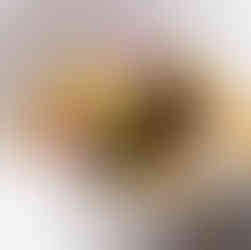Born in 1974 in Kyoto. After honing his Japanese cuisine at Tsuruya’s main restaurant, he became head chef at Umu in London in 2004, before becoming executive chef at Hoshino Kyoto, at the Hoshinoya Resort. The following year, in 2012, Hoshinoya Kyoto was awarded a Michelin Star. Ichiro Kubota, who has built up his career both in Japan and abroad, and is currently the owner and chef of KITCHEN 16 in Kyoto, looks back on his trajectory as a chef and explores the origins of his creative and artistic sensibility, which goes beyond the boundaries of Japanese cuisine.

The Kyoto Traditions that Nurtured Ichiro Kubota’s Sensibility
Chef Ichiro Kubota was born to the second-generation owners of the renowned Japanese restaurant Kappo Hassun in Gion, Kyoto. His father, a chef, had many acquaintances who were potters and lacquerware craftsmen, so Kubota learned first-hand that “tableware is indispensable to cooking.”
“My father used to say, “Cooking and tableware converse with each other.” In Japan, there are four seasons, which are deeply related to ingredients and cooking methods. If Japanese cuisine uses rich ingredients and paints a picture of the four seasons, then the tableware is the frame.
Furthermore, he says that Japanese cuisine has an artistic aspect, much like bonkei*, which creates a landscape.
“For example, a 24cm tray of kaiseki cuisine depicts a scene on a wooden tray. Through the scenery, which changes with the seasons, I feel the depth of the ingredients and the fascination of Japanese cuisine.”
On the other hand, Kubota also has a side that is not bound by traditional frameworks. His curiosity about other culinary fields besides Japanese cuisine seems to have started at an early age.
“My grandfather on my mother’s side in Hiroshima loved to eat, so when I went to Hiroshima for summer holidays as a child, we would eat at the French restaurant in the hotel. That was something I looked forward to very much.”
This joy turned into longing, and he says, “By the time I was in primary school, I was attracted to the sight of cooks, glittering chandeliers, and crockery.” Having made up his mind to become a chef, Kubota entered the world of Japanese cuisine after graduating from university.

Learning the Importance of Margins, From Western-Style Painter Morio Matsui
After training at his parents’ restaurant Kappo Hassun and the main restaurant of Tsuruya in Osaka, Kubota began training in French cuisine at HOTEL LA VILLA in Corsica, France, in 2003. During this time, he went to the studio of the Western-style painter Morio Matsui and received advice from him that would become the basis of his current artistic perspective.
“When I brought my sketches to his studio, he pointed out that if I drew everything I wanted to draw, the picture would become boring. I learned that it is important to leave room for the recipient’s imagination.”
Furthermore, Matsui was also a key figure in helping Kubota surpass his father, who was his first teacher.
“He told me “I think you’re bound by a sense of duty, that you feel you have to make Japanese cuisine like your father. But Ichiro, you should cook the food you want to cook.” I think Matsui-san had a big influence on who I am today.”
In this way, the artist’s words inspired him to take his first step to explore the path of a chef.
Photos/ 星のや京都
Facing the Ingredients and Listening to Producers
The talented chef, who has had a spectacular career both in Japan and abroad, including a stint as executive chef at a kaiseki restaurant in London, is now surprisingly involved in a Thai restaurant specialising in take-away food. He runs KITCHEN 16 with his wife, Kaori.
Even in Thai cuisine, the approach of bringing out the best of the ingredients, which is the basis of Japanese cooking, is still alive and well, and Kubota describes producers as “important partners, who serve as a reference guide.”
“I try to listen to and analyse the opinions of producers honestly in order to be honest within my own cooking.”
One of the restaurant’s signature products, which include Thai curry and khao man gai, is an unusual white miso crème caramel. They have created a dessert that goes well with whisky.

The ‘caramel’ of the pudding, made with mirin (sweet sake) from Nara Prefecture’s Yagi Sake Brewery, is rich and flavoursome, with a moderate bitterness that compliments the sweetness of the pudding batter. The deep flavour lies in the ‘koji’, which is a very distinctive partner for whisky and brandy. With this dish, they are introducing a new, mature way of enjoying whisky and pudding to the world.
Kubota’s favourite artist is “Pablo Ruis Picasso.”
“Before, I preferred realistic paintings and couldn’t understand those crumbling Picasso drawings. But when I saw an eight-year-old Picasso’s painting of a lion, which he drew with his outstanding drawing skills, I was very impressed.”
The foundation is there, so it can be ‘broken down’. “I can quote the glittering world of French and Italian cuisine because I have a foundation in Japanese cuisine,” he explains, paying homage to the artist and noting the similarities between his own style and that of Picasso.
Kubota puts his creativity into his ingredients while respecting the spirit of Japanese cuisine. His insatiable inquisitiveness has opened up endless possibilities for creating new scenes.








